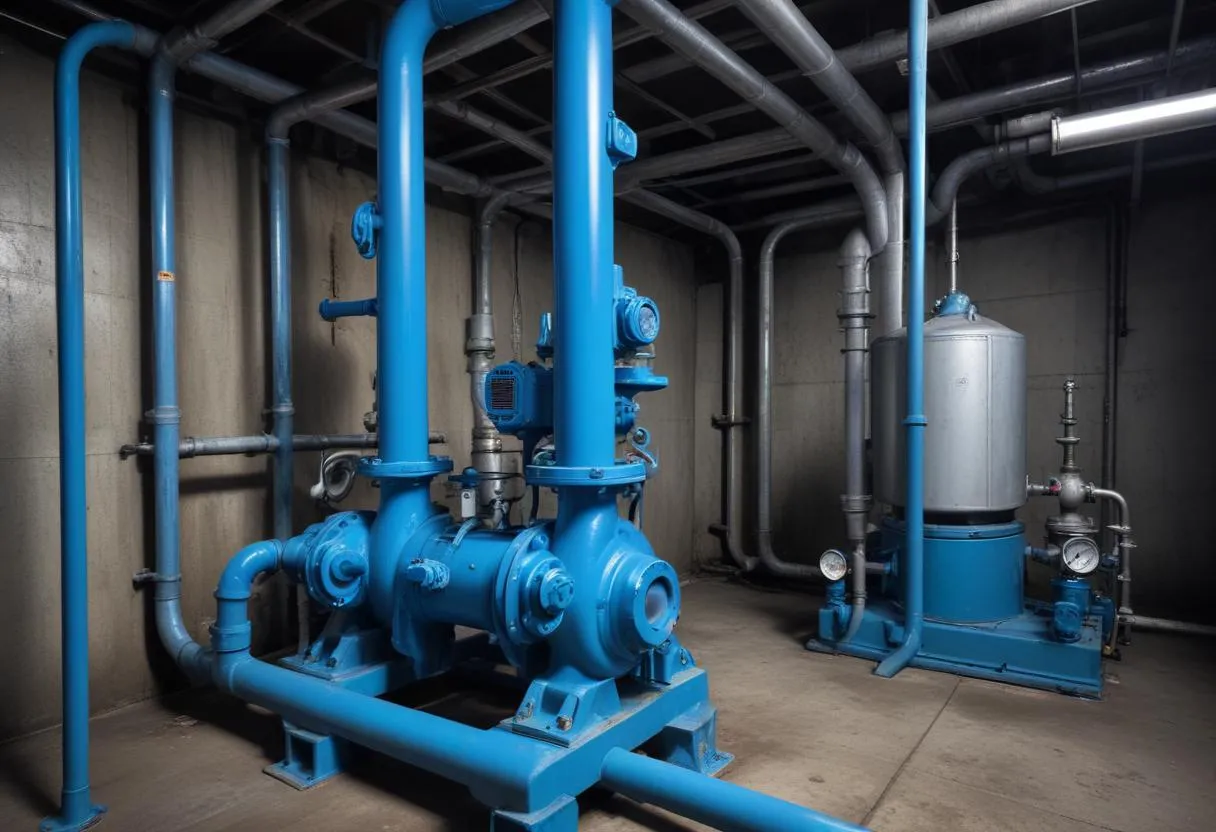 When selecting a pump for an industrial or engineering application, understanding the properties of the fluid being handled is crucial. These properties directly influence the type of pump you may need, as well as its durability and efficiency in service.
When selecting a pump for an industrial or engineering application, understanding the properties of the fluid being handled is crucial. These properties directly influence the type of pump you may need, as well as its durability and efficiency in service.
Viscosity is one of the primary fluid properties to consider. It refers to the fluid’s resistance to flow and can significantly affect the pump’s performance. Pumps operating with high-viscosity fluids, such as heavy oils, require different design considerations compared to those used with low-viscosity fluids like water. For instance, a pump designed for low-viscosity fluids might offer less resistance and achieve higher flow rates compared to one tailored for more viscous fluids, which might need additional power to operate effectively.
The corrosive nature of the fluid is another critical factor. Fluids that contain corrosive substances demand pumps made from materials that can withstand the chemical attack to prevent premature wear and failure. Materials such as stainless steel or specialized plastics are commonly used for handling corrosive fluids.
Temperature also plays a defining role. High-temperature fluids require pumps designed to withstand thermal stresses. Pumps used for such fluids are specifically engineered with materials and mechanical seals capable of handling elevated temperatures without degrading.
Here is a simple table that categorizes different fluids and their typical pump requirements:
| Fluid Type | Viscosity | Corrosive Nature | Temperature | Recommended Pump Type |
|---|---|---|---|---|
| Water (clean) | Low | No | Moderate | Centrifugal pump |
| Heavy oil | High | No | High | Positive displacement pump |
| Sulfuric acid | Low | Yes | High | Chemical resistant pump |
Solid content is another consideration. Fluids with high solid contents such as sludges or slurries can clog or abrade pump components. Pumps handling such fluids often require special features like hardened materials, open impellers, or specialized seals to cope with the abrasive nature of the fluid.
Lastly, the toxicity and flamability of the fluid can dictate specific safety measures in pump design and selection. For example, pumps used for flammable or explosive fluids must be designed to eliminate ignition sources and may require special leakage containment to ensure operational safety and environmental protection.
Understanding these fluid properties allows engineers to specify the most efficient, safe, and functional pump for any application, ensuring longevity and optimal performance. This tailored approach helps minimize maintenance issues and operational costs over the pump’s lifecycle.
Calculating flow rate and pressure requirements
Accurately calculating flow rate and pressure requirements is a critical step in pump selection to ensure the system meets operational demands while maintaining efficiency. To start, you need to determine the total flow rate, typically measured in gallons per minute (GPM) or liters per minute (LPM), required by your application. This can be done by analyzing the end-use points, such as nozzles, process machinery, or other equipment that uses the fluid.
Calculating the flow rate involves adding up the flow rates of all individual components that the pump will supply. For instance:
- Each cooling system nozzle may require 2 GPM.
- Processing machines could need 10 GPM each.
Thus, if you have 3 nozzles and 2 machines, the total required flow rate will be ( (3 times 2) + (2 times 10) = 26 ) GPM.
Similarly, the pressure requirements depend on several factors, including the height that the fluid must be lifted (head pressure) and the pressure needed at the outlet for equipment operation. The pressure head, measured in feet or meters, is calculated based on the vertical distance the fluid needs to travel and any resistance due to pipe friction or bends.
Use the following equation to estimate the required pressure head:
| Static Head | Total vertical distance fluid needs to travel (feet or meters) |
|---|---|
| Friction Loss | Calculated based on pipe length, diameter, and flow rate using industry tables or software |
| Total Dynamic Head (TDH) | Sum of Static Head and Friction Loss |
Example calculation: If the pump needs to move water to a height of 30 feet and the friction loss after calculating through tables is found to be 10 feet, then the Total Dynamic Head (TDH) would be ( 30 + 10 = 40 ) feet.
After determining TDH and the total flow rate, the next step is selecting a pump curve. Pump curves are graphical representations provided by manufacturers that show how different pumps perform under varying conditions of head and flow rate. The key is to choose a pump whose curve meets or exceeds the TDH and GPM required by your system at an efficient point on the curve—typically not at the extreme ends.
Moreover, consider potential future expansions or modifications in your system. This foresight can influence the pump choice, opting for a slightly higher capacity to accommodate future increases in flow rate or head without needing complete pump replacement, thereby optimizing long-term operational costs and sustainability.
In summary, understanding and rigorously calculating the flow and pressure requirements are vital to the successful selection and operation of a pump. Accurate calculations lead to efficient, reliable, and cost-effective pump operation, while preventing issues such as cavitation, which can cause significant damage and inefficiencies within pump systems.
Considerations for pump installation and environment
 When planning the installation of a pump, it is essential to consider both the physical environment and the operational conditions in which the pump will function. These considerations are vital for ensuring the long-term efficiency and reliability of the pumping system.
When planning the installation of a pump, it is essential to consider both the physical environment and the operational conditions in which the pump will function. These considerations are vital for ensuring the long-term efficiency and reliability of the pumping system.
1. Installation Space: The available space can dictate the size and type of pump you select. Ensure that there is adequate room not only for the pump itself but also for necessary peripherals such as pipes, valves, and monitoring equipment. Moreover, accessibility for maintenance, repair, and inspection should be factored into the installation design to avoid operational disruptions and facilitate easy service operations.
2. Ambient Temperature: The environmental temperature can greatly influence pump performance. For instance, pumps operating in extreme cold or heat may require additional features such as heaters or cooling systems to maintain optimal operating conditions.
3. Altitude: Higher altitudes can affect pump performance due to reduced air pressure, which can lead to decreased motor efficiency and potential cavitation issues. It’s crucial to select a pump that is capable of operating efficiently under these conditions or make necessary adjustments to standard models.
4. Moisture and Humidity: High levels of humidity can cause condensation inside electrical components, leading to corrosion or electrical failures. If the pump installation site is prone to moisture or high humidity, consider pumps with enhanced moisture protection or enclosures designed to prevent moisture ingress.
5. Power Supply: Ensure that the power source available at the installation site is compatible with the pump’s requirements. Variations in voltage and frequency can affect pump performance and may necessitate the use of transformers or other power management devices.
6. Environmental Protection Measures: In areas where environmental protection is a concern, such as near sensitive aquatic or wildlife habitats, it may be necessary to incorporate additional containment systems to prevent leaks or spills, or to choose pumps with low environmental impact ratings.
7. Regulatory Compliance: Be aware of local and national regulations regarding pump installations, including noise restrictions, emissions standards, and safety codes. Compliance with these regulations not only ensures legal operation but can also enhance community relations and operational transparency.
Example of Installation Considerations Summary:
- Space Requirements: Minimum 5 feet clearance on all sides for maintenance access.
- Temperature Controls: Installation of a cooling system for operation in environments above 100°F.
- Humidity Protection: Use of sealed electrical boxes to resist moisture ingress.
- Power Adjustments: Installation of a voltage regulator to address local power fluctuations.
Accommodating these factors into the planning and implementation stages of your pump installation will not only optimize the pump’s performance but also extend its service life and reduce the likelihood of costly downtime and repairs. Therefore, a thorough analysis and strategic approach to considering installation and environmental factors are indispensable in achieving a successful pump setup.